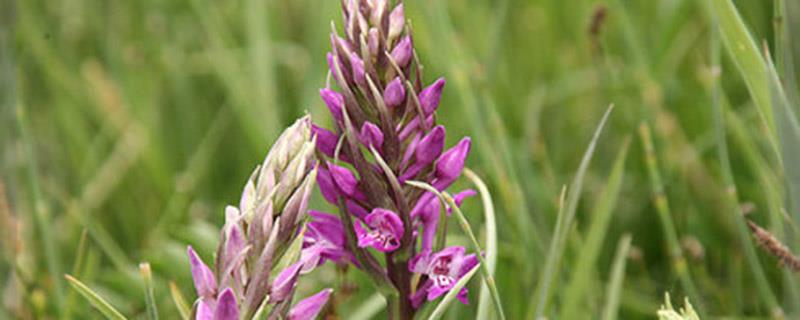The flower language and symbol of wintersweet
Last Update :2024.11.11
Article Catalog
There are three flower languages in wintersweet, one is integrity, arrogance, clear heart, righteousness, independence and innovation; the other is loving heart and noble soul; the third is loyalty, independence, perseverance, loyalty and strength , steadfast and noble. It symbolizes the spirit of perseverance, tenacity, sacrifice, and the ability to endure loneliness, as well as the glory and success of life.

Flower language
Flower language
Flower language 1
High-spirited, arrogant, clear heart, upright, independent and innovative.
"When the midwinter comes, all the flowers are gone, only the wintersweet is broken, and Lingxue blooms alone."
Flower Language 2
A loving heart and a noble soul.
Rich in love, the wintersweet flowers are as golden as wax, and they stand proud of the frost and snow. They bloom in the cold weather at the beginning of the year, and they remain open for a long time, blooming earlier than the plum blossoms. It's really light yellow with snow, frozen berries filled with frost, the aroma is strong and clear, gorgeous but not vulgar. There was a poem praising it: "The jasper branches are naturally thin, and the gold is particularly fragrant." Wintersweet blooms in the cold winter. If you can buy a few branches from a flower shop, insert them into a vase and place them on the desk, their fragrance will permeate the room, making people feel the fragrance penetrating to the bones, relaxed and happy. Or give it to a kind elder, which has a more profound meaning.
Flower Language 3
Loyalty, independence, perseverance, loyalty, strength, steadfastness and nobility.
Wintersweet is a traditional and valuable ornamental flower and tree that is a specialty of China. There is a famous saying that goes “To know the winter plum blossoms, you can cross the wild pond”. "Yao Shi Yu" also calls wintersweet "Han Ke". Wintersweet blossoms are the first of all flowers to bloom before spring, especially tiger-footed plum blossoms. They bloom in the tenth month of the lunar calendar, so they are called early plum blossoms. And because the winter plum blossoms bloom at the beginning of winter and become fruitful after winter, they are also called winter plums.

Representative meaning
Wintersweet symbolizes perseverance, tenacity, sacrifice, and the ability to endure loneliness in life. It also symbolizes the glory and success of life.
Origin of aroma
Wintersweet is a precious flower and tree unique to China, native to the Qinling Mountains, Daba Mountain and Wudang Mountain in central China. A large area of wild wintersweet forest was found in Shennongjia, Hubei. In Liuzhuang Village, Yanling County, Henan Province, almost every household has wintersweet planted in front of and behind their houses, and it is known as "Liu Jialong's Plum Blossoms Crown the World". Liuzhuang Village has a long history of planting wintersweet. Legend has it that wintersweet has no fragrant smell. The king of Yan State in the Western Zhou Dynasty (now northwest of Yanling, Henan Province) liked wintersweet flowers very much, but thought they were not fragrant. He ordered the gardener to make the plum blossoms smell fragrant within a time limit, otherwise he would be severely punished.
When he was at a loss, a hermit named Liu brought some wintersweet rootstocks and helped graft them on the yellow plums. In the twelfth lunar month of winter, with nine cold days and hundreds of flowers withered, the wintersweet buds emit bursts of fragrance. The king of Longyan was overjoyed, the gardeners were protected, and Yanling wintersweet was promoted. Wintersweet is not a plum, and the two are closely related. In plant taxonomy, wintersweet belongs to the family Wintersweet, a deciduous shrub, while plum blossoms belong to the rose family. Because they bloom in late winter or early spring one after another, and their flower shapes and fragrances are similar, they are often mistaken for the same species. The flowers of wintersweet grow solitary on both sides of the branches, with many perianths, and the inner layer is smaller and purple-red in color; the middle layer is larger, yellow in color, slightly shiny, and waxy; the outermost layer is composed of tiny scales. Sepals are similar to petals.

Poetry
According to Wang Shimao's "Xue Xue" According to "Pu Yu Shu", during the Xining year of Emperor Shenzong of the Song Dynasty (1068~1077), Wang Anshi once wrote a poem praising Huangmei. Later, during the Yuanyou reign of Zhezong of the Song Dynasty (1086~1094), Su Dongpo, a generation of literary giants, and Huangshan Valley saw that the yellow plum blossoms resembled beeswax, so they named them "winter plum blossoms" and said that their "fragrance is like beeswax". Plum is made by twisting wax by female workers, so it is called wintersweet." From then on, wintersweet became famous and flourished in the capital. Later, poets often focused on the word "wax" in their poems about wintersweet. For example, "Butterflies pick flowers and turn them into wax, and they also turn batik flowers into wax" and so on.
Of course, there are many poems about wintersweet, such as: "I will stay at the end of the world, leaning towards the beauty of things. The cold plums are the most hateful, they grow as last year's flowers.", "The wild plums grow behind Wenjun Temple, and they are densely dyed with fragrance." It's as yellow as a palace. Don't fold it to cover your old eyes. If you want to know the spring scenery, you don't dare to be fascinated by the true color. The style is not like plum blossoms.
Meaning
- END -
The difference between pyracantha and hawthorn

Tree trunk classification: Pyracantha is an evergreen shrub, and the old branches ...
Breeding methods and precautions for broad-leaf red orchid

Watering: During the peak growth period, sufficient water should be maintained, us...